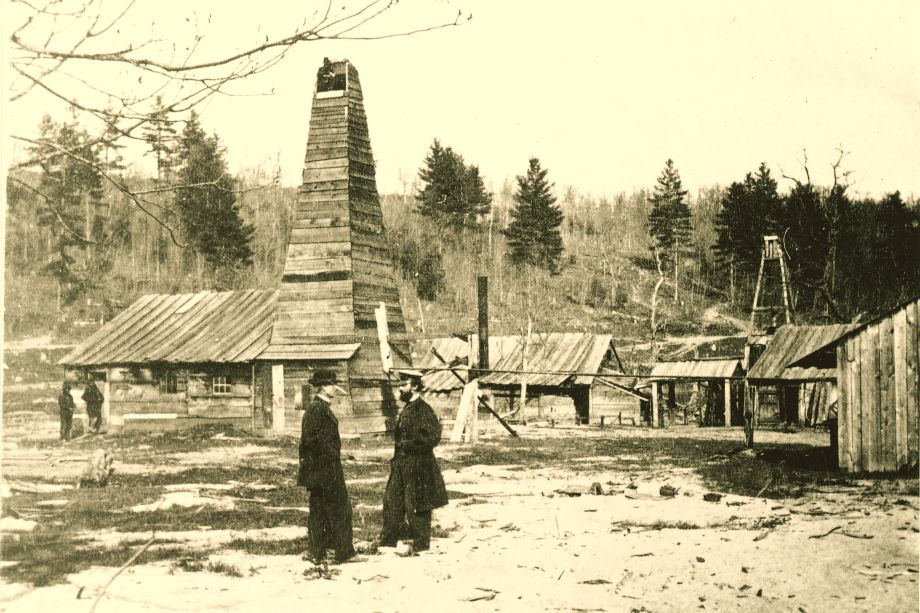Two Tourist Attractions Named ASME Landmarks in U.S. and U.K. Ceremonies
Two Tourist Attractions Named ASME Landmarks in U.S. and U.K. Ceremonies

Within the span of one week earlier this month, ASME President Madiha El Mehelmy Kotb participated in two ASME landmark designation ceremonies on different continents. During the ceremonies, two popular tourist attractions – Waikiki Beach Wave Pool in Arizona and the Titan Crane in Scotland – were designated as historic landmarks of mechanical engineering achievement.
The two designations bring the total number of ASME landmarks to 253. ASME’s History and Heritage Committee oversees the ASME landmarks program, which was introduced in 1971.
In the first ceremony, on Aug. 17, the Society designated the Waikiki Beach Wave Pool at the Big Surf Waterpark in Tempe, Ariz., as an ASME Historic Mechanical Engineering Landmark. The wave pool, which opened in 1969, was recognized by the Society for being the first inland surfing facility in North America.
Big Surf Waterpark, the oldest waterpark in the United States, is the first amusement or waterpark to receive landmark status from ASME. It is only the third landmark ASME has named in Arizona, following the designations of the Childs-Irving Hydroelectric Project in Fossil Creek and the Magma Copper Mine Air Conditioning System in San Manuel.

More than 100,000 people visit the Big Surf facility and its 2.5-acre lagoon each year to use the park’s waterslides and to surf and raft in the Waikiki Beach Wave Pool. The pool produces waves by pumping water to a specified height in the reservoir and then releasing it through underwater gates. That water then breaks over an adjacent baffle, resulting in waves that can reach up to five feet. The wave generation process was conceived and designed in the mid-1960s by Phil Dexter, a construction engineer and entrepreneur from Phoenix.
Addressing the ceremony’s attendees, ASME President Kotb noted that engineering is not all serious business; it can be fun as well. “When we think of engineering we think of rockets to the moon, bio-medical wonders like the artificial heart, engines and power plants, boilers and complex systems, precision tools and nano-scaled devices,” Kotb said. “This morning, however, we’re here to look at a different side of engineering. The part that brings us fun, entertainment and excitement, all in a safe and refreshing place — an oasis — like the Big Surf Waterpark.
“While the average person may not be aware of the technology that makes the wave pool such fun place, it’s probably more important to them that they simply enjoy the benefits of engineering and visionary engineers like Phil Dexter,” she continued.
During her remarks, President Kotb thanked Bob Peña, general manager of Big Surf, and his staff for making the landmark designation possible. She also recognized the ASME volunteers who organized the event, including Herman Viegas of the ASME History and Heritage Committee; Stella Dearing, chair of the Arizona Section; Cindy Stong, past section chair; Rachel Harley, executive committee member; and ASME District E Leader Eric Smith.

Just three days later, President Kotb had traveled 5,000 miles to Scotland to participate in a landmark ceremony for the Titan Crane at Clydebank. The crane, which is one of Scotland’s most-visited tourist attractions, was honored as an International Historic Civil and Mechanical Engineering Landmark by ASME, the American Society of Civil Engineers, and the United Kingdom’s Institution of Civil Engineers and Institution of Mechanical Engineers.
The 150-foot tall Titan Crane, which is the world’s first giant electrically powered cantilever crane, was recognized by the four societies for its engineering innovation and its contribution to Scotland’s shipping industry during the 20th century. The crane, one of only 13 of its type in existence, is the first ASME landmark to be designated in the Scotland, as well as the first to be endorsed by four major international engineering associations.
Introduced in 1907, the crane was constructed by the celebrated Scottish engineer Adam Hunter, of the Glasgow-based firm Sir William Arrol & Co. The crane’s pioneering design, which featured a fixed counterweight and electrically operated hoists mounted on a rotated beam, made it faster and more responsive than its steam-powered precursors. It was powerful as well, able to lift up to 160 tons in freight. The design of the Titan Crane went on to become the most widely implemented in the world, leaving a lasting influence on crane design and construction for decades afterward.
During the last century, the Titan Crane was used in the construction some of the world’s largest battleships as well as such ocean liners as the Queen Mary, the Queen Elizabeth, and the Queen Elizabeth 2. The Titan Crane is now maintained as a visitor and education heritage center on Scotland’s River Clyde. Since 2007, more than 40,000 people have visited the Titan and in doing so have gotten a close look at Scotland’s shipbuilding past.

“By joining with our sister societies today in recognizing the place that the Titan Crane has in engineering history, we’re reminded of how human ingenuity and the will to advance knowledge and innovation can impact the evolution and design of modern machines — even to the point of inspiring and influencing the progress of industries,” ASME President Kotb said during the landmark plaque presentation.
“As it looms over the harbor, the Titan Crane reminds us of the significant role that engineers have in improving quality of life,” Kotb said. “And, it reminds us of those who have paved the way before us. History has a great way of teaching us how to preserve our past so that we can pave the way to a more prosperous future.”
To learn more about the ASME Historic Mechanical Engineering Landmarks program, visit www.asme.org/about-asme/who-we-are/engineering-history/landmarks.




